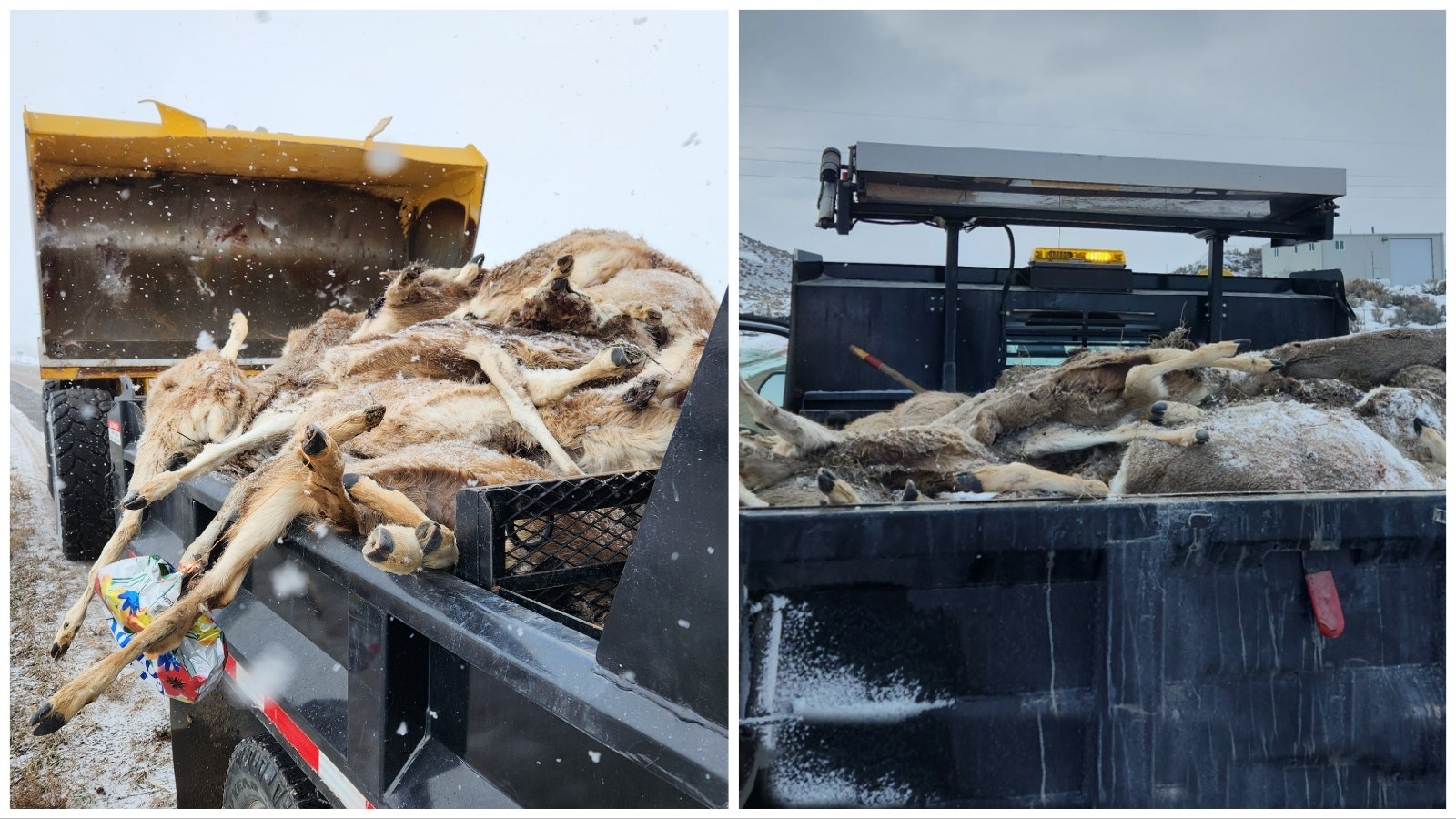Driving along Interstate 80 this spring gives daily reminders of just how hard the winter has been on wildlife, a Wyoming Department of Transportation snowplow driver said.
“I see several deer and antelope (carcasses) on 1-80, on the other side of our right of way fence,” snowplow driver Jason Fry of Evanston told Cowboy State Daily.
“I couldn’t guess the number, but in one group I saw six antelope who all seemed to give up the fight in the same spot. It’s heartbreaking,” he added.
As snowplowing duties have slackened off somewhat, Fry has joined other WYDOT employees in the grim task of collecting carcasses from alongside highways to be hauled of to the nearest landfill.
Some of the animals came down to the roadsides because of deep snow on their winter range, only to be struck and killed by cars. Others, like the six antelope that Fry saw, were steadily worn down by cold and starvation until finally giving up their last wisps of life as traffic passed by.
Numbers Down?
As of Monday, WYDOT crews reported recovering 772 animal carcasses of all species, according to charts provided to Cowboy State Daily. That’s actually down from January-April numbers from previous years.
For example, from January-April 2019, a whopping 2,100 carcasses were recovered. Last year, 1,041 were reported recovered during that same time period.
However, the number of antelope is up dramatically from last year. Forty antelope carcasses were picked up by WYDOT crews January-April 2022, while 214 were reported as of Monday.
Reported wildlife collision numbers are also down this year. A chart showing collision tallies for Jan. 1-April 24 each year since 2020 indicates that 2021 was the worst with 481, compared to 351 this year.
There are variables that affect the numbers, WYDOT spokesman Doug McGee told Cowboy State Daily.
“Those represent only wildlife crashes that were reported through law enforcement,” he said. “Unreported collisions would, of course, not be included. It is not rare for someone to hit an animal and then choose not to report it.”
Collision and carcass reports can sometimes be duplicated, he added. Many of those come in through the 511 app, which people can download to their cellphones and use to file reports.
“There could be duplicates between the data sets,” McGee said. “Someone could have used the app to report a carcass while that same animal was collected by our maintenance forces after being included in a crash report.”
Staff shortages could also come into play. Going into this winter, Wyoming was short 71 snowplow drivers and 50 Highway Patrol troopers.
“In addition, our staffing shortages on maintenance crews could lead to some delays in carcass collection, leading some motorists to believe there are more instances of roadkill than usual,” McGee said.
And WYDOT numbers likely don’t give a full picture of just how much wildlife has died this winter, he added.
“Our focus for data collection is road-based. So, our numbers may not represent the larger picture facing wildlife populations after the harsh winter that other sources are indicating,” he said.
Death Toll Varies By Area
The devastation that Fry has seen is typical of his area.
Central, southcentral and southwest Wyoming have been the hardest hit by snowfall in the low country and winterkill among some of Wyoming’s premier mule deer and antelope herds.
Elsewhere Wyoming, such as in the northwest, it’s been about an average year for roadkill reports and carcass collection, WYDOT spokesman Cody Beers told Cowboy State Daily.
“We’ve been piking up a couple of carcasses per crew per day,” he said.
Meanwhile, Fry said his crew recently picked up 29 mule deer carcasses along just on one section of road on the north side of Wyoming Highway 89 near Evanston.
However, even in the areas where carcasses are scarce, the way the animals have suffered is evident, Beers said.
“We just got that deep, heavy crusted snow, and those animals couldn’t stay on top of it. They were just breaking through with every step, and that just saps the energy right out of them,” he said. “That hard crust was stripping the flesh off their legs. Some of their front legs were stripped right down to the bone.”
Mark Heinz can be reached at mark@cowboystatedaily.com.





